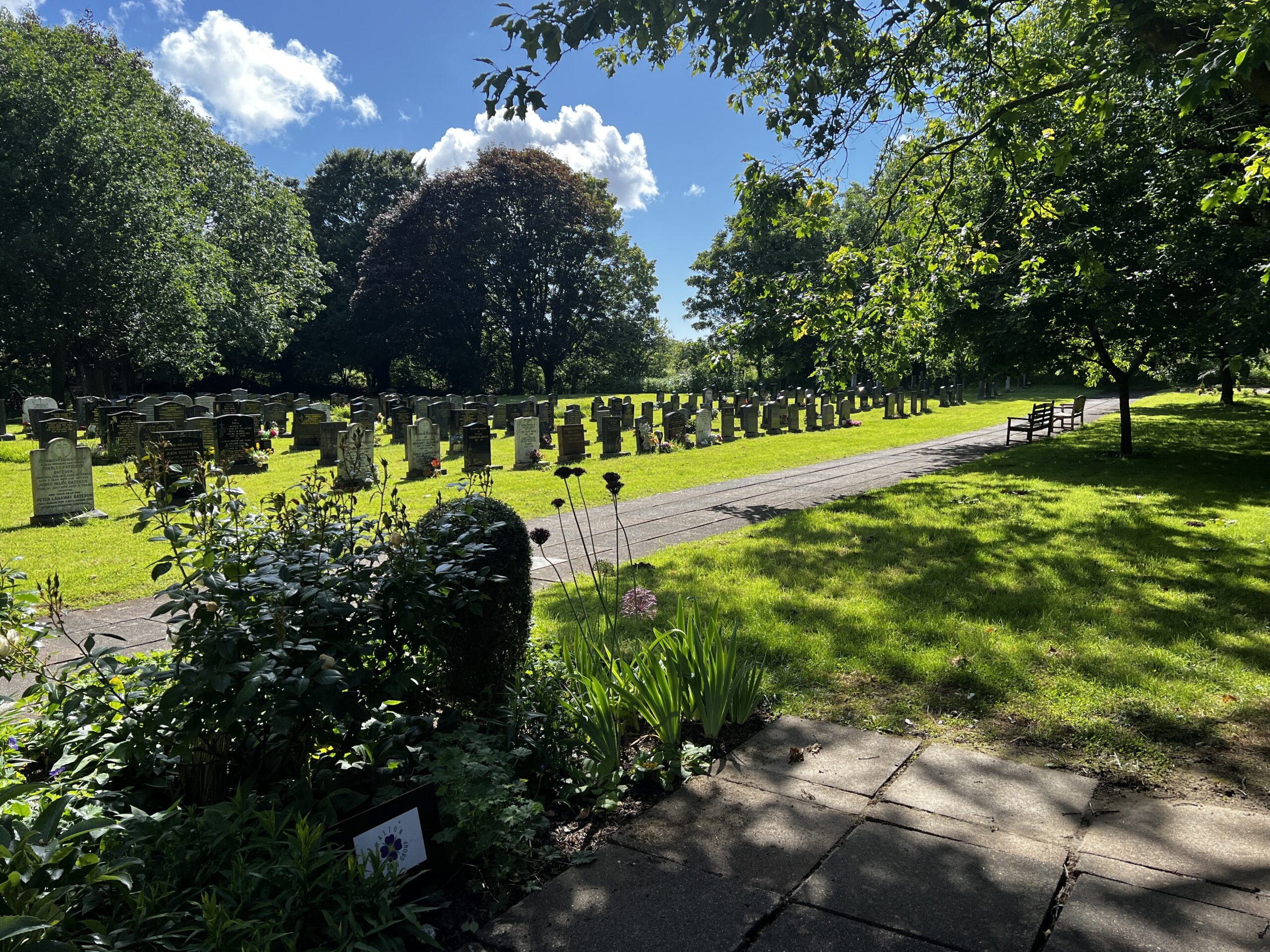Neighbourhood Plan
The plan has been submitted to the Lancaster City Council as required by Regulation 15 of the Neighbourhood Planning (General) Regulations 2012.
Click the button below to view the submitted documents.
Parish Council Facilities, Services & Responsibilities
Parish councils have powers to provide some facilities themselves, or they can contribute towards their provision by others. Halton-with-Aughton Parish Council provide the following facilities within the parish:
The Centre on Low Road which is leased to the Halton Community Association
Recreation Grounds at The Centre and St.Wilfrid’s Park
Children’s Play Areas at The Centre, St.Wilfrid’s Park and Schoolhouse Lane
Allotments on Low RoadOpen Spaces include Caste Hill, Quarry Road and the area near the roundabout between High Road and Low Road
Halton Burial Ground on Foundry LaneWar memorial & memorial gardens on Church Brow
Open Spaces
These include the outdoor areas at the Centre and St. Wilfrid’s Park and Castle Hill.
Learn more
War Memorial & Garden
The War Memorial and Memorial Gardens are the responsibility of the Parish Council.
Learn more
Allotments
There are 34 allotments managed by the Parish Council and available to local residents.
Learn more
Castle Hill
The remains of a motte & bailey situated above the War Memorial and overlooking the valley.
Learn more
Meetings
Meetings are held at 7:15pm at the Centre on the 2nd Wednesday of every month (except August).
Learn more
Aughton
Situated at the edge of the parish, a couple of miles from the centre of Halton, is the small hamlet of Aughton. There has been a settlement in Aughton for over 1000 years and today, as has been the case throughout its history, farming plays a very significant part in the life of the village.
Although the numbers of people living in and around Aughton are not large, there is a thriving community life which is centred on the village hall and St Saviour’s Church. The church offers a regular programme of services, including at all major Christian festivals.
The churchyard has been managed for biodiversity for many years and in the spring and summer months you can see lovely displays of wild flowers around the church.
Rarely a week passes without something happening in the hall and as well as its regular programme of events the hall is available for private bookings. The facilities include a children’s playground outside and catering, indoor sporting and high speed internet facilities. Car parking is also available. Details of church services and hall activities are published in the Prattle and for more details about using the hall you can contact aughtonsecretary@gmail.com
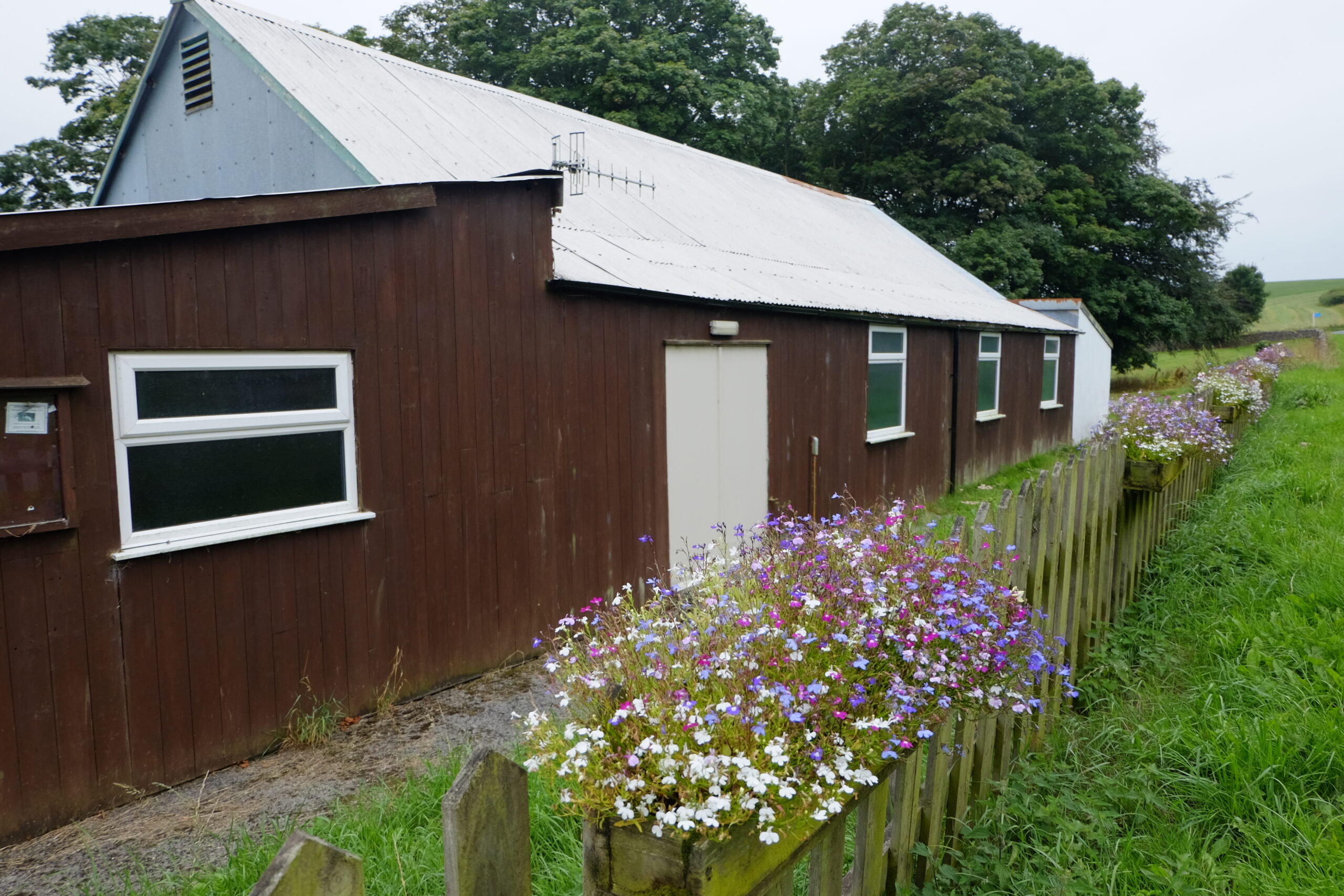
Allotments
There are 34 individual plots available, though these are nearly always in use by tenants, so the Parish Clerk keeps a waiting list for residents who wish to take on an allotment.
The rent for 2025 is currently £33 per annum for residents.
You will need to sign a legal tenancy agreement in order to have an allotment and agree to abide by the allotment rules.
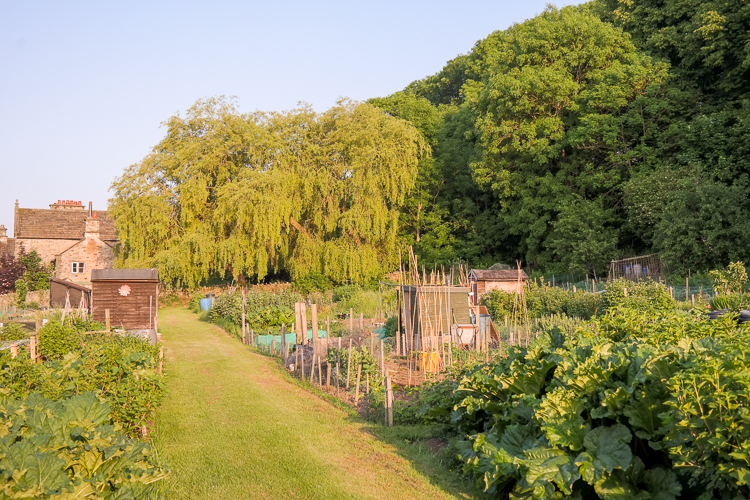
War Memorial & Garden
The War Memorial was built after the first World War. It was refurbished in 2018 ready for the Centenary commemoration, with the work being paid for via donations from local residents and a grant from the War Memorial Trust.
Trevor Green who is a local historian has extensively researched the history of the casualties listed on the War Memorial which he has generously made available for others to read.
The Memorial Garden is the responsibility of the Parish Council, but actively planted and maintained by Halton Gardening Group.
It was donated to the village in 1935 by the Reverend John Harold Hastings, in memory of his parents and of his brother Captain George Herbert Hastings who was killed in action in France in 1915.
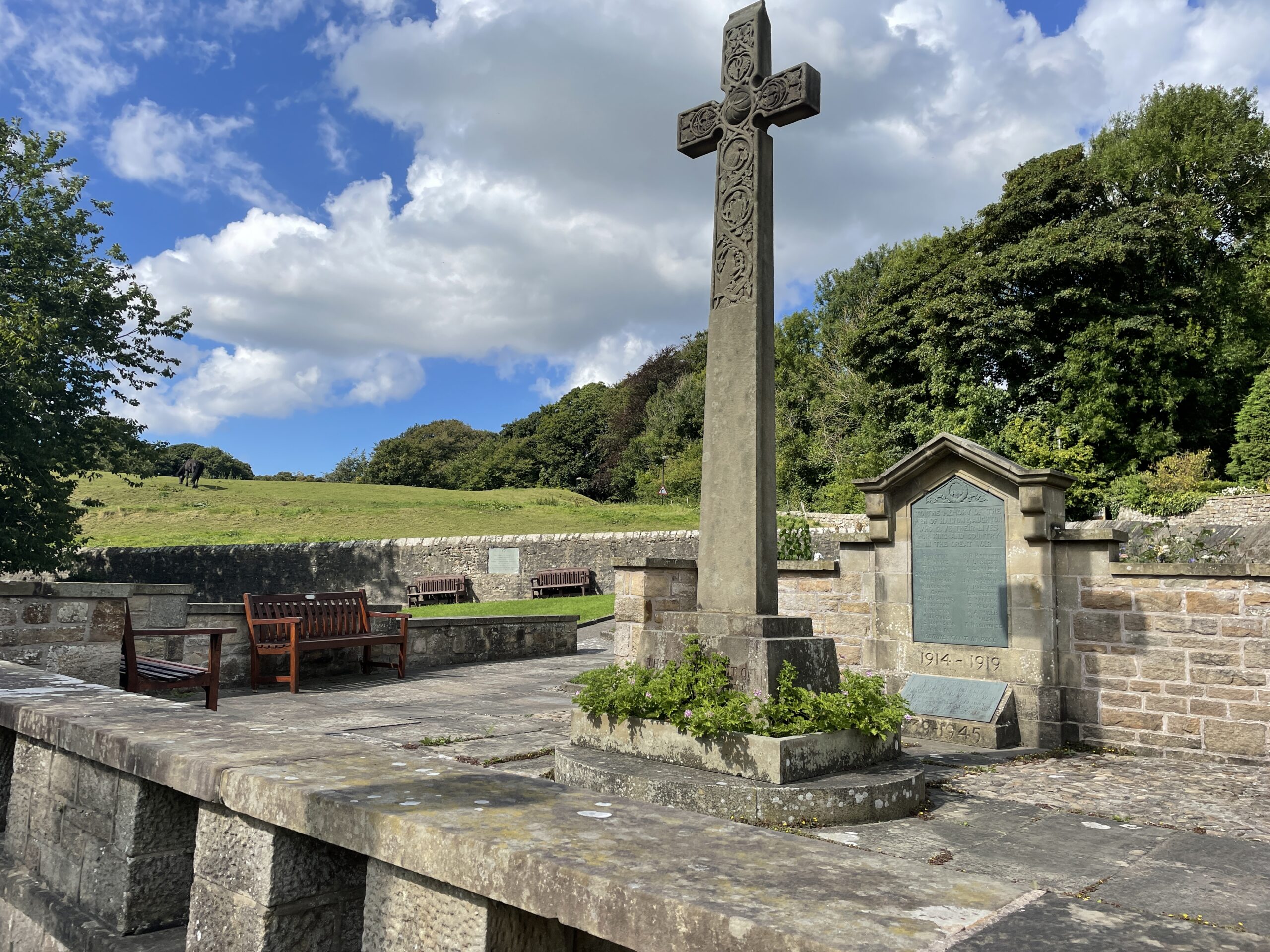
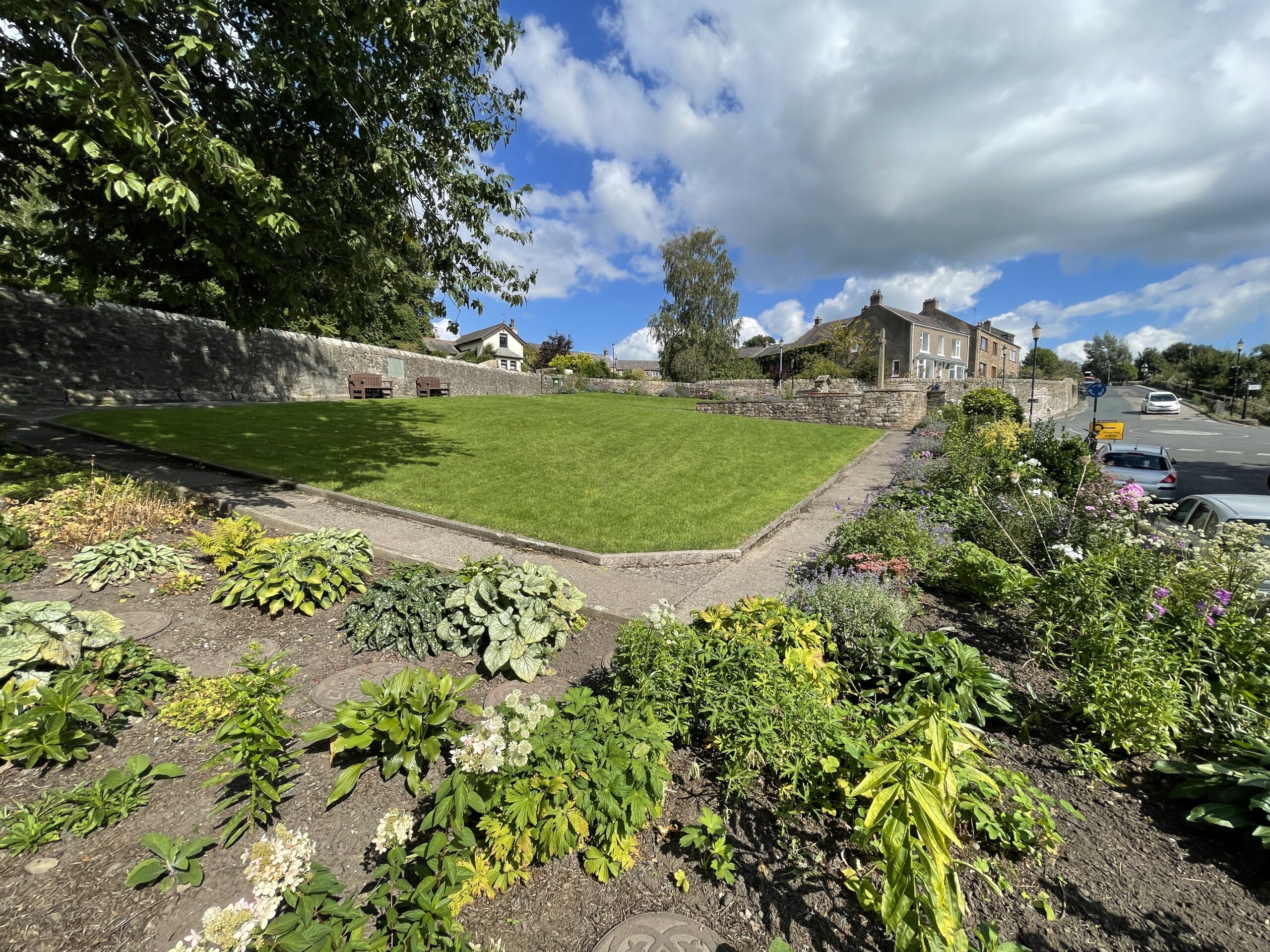
Castle Hill
A hundred yards to the north-east of the parish church, upon the top of a lofty cliff on the other side of the little beck, towers a circular artificial mound of earth, which bears the name of the ‘Castle Hill.’ This and some adjacent earthworks are the remains of a small mount and court castle, which is very strikingly situated.
The site is nearly 200 yds. away from the present banks of the Lune, which runs through the flat meadows below. It is at an altitude of 100 ft. above the sea and 90 ft. above the river. It is situated at the extreme corner of a promontory, formed by the deep valley of the Cote Beck where it has cut its way to join the low-lying river. The ground falls almost precipitously for 50 ft. or so on the sides next the brook, the south-west and south, while to the south-east it is but slightly less steep. On the north side, however, it is only separated from equally high ground behind by a slight depression, and at less than 200 yards’ distance the hill rises about 25 ft. higher. As long as weapons were short in range the position would be a magnificent one, and the command from the top of the mount complete; but with the advent of the long-bow it would not be at all secure. The view from the fortalice is extensive on every side except the north; it ranges both up and down the valley of the Lune and over the undulating ground across the river to the distant hills beyond; Lancaster is just visible to the south-west.
Halton mount is visibly artificial, and, as usual, circular and conical, with a truncated top ; it is about 100 ft. in diameter at its base, and rises 12 ft. above the level of the bailey, the top measuring about 35 ft. across. The fosse which once separated the mount from the bailey has been almost filled in by former ploughings, but it is still traceable by the curved depression along its course, and is especially recognizable where the rampart of the bailey approaches the mount from the north. There is no fosse round the mount on its west, south, and south-east sides, where the steep, and in places almost precipitous, natural slopes, which were possibly artificially scarped as well, formed ample protection.
The bailey lies to the north-east of the mount and is crescentic in shape. The area of it and its defences and those of the mount taken together is hardly an acre. Its interior has apparently been raised artificially to a height of about 4 ft. above its immediate surroundings; this in order to command equally high ground near it on the north. The site shows traces of ancient ploughing, which has largely obliterated the former defences; but a rampart of varying height is still visible on the north-west and north sides and is traceable on the north-east; the fosse outside this has evidently been well-nigh filled by former cultivation of the field, and is now only to be identified by a depression about half-way round, beginning from the west.
The highest surviving portion of the rampart is now only 2 ft. in height above the level of the bailey, and 6 ft. above the ground outside, from which position it is best viewed. The hill upon which the castle is situated has been grazed for the past fifty years or more, and all its steep slopes, both artificial and natural, have become terraced by the continual tread of animals. This has also tended to obliterate the previously ploughed defensive earthworks. There are no signs of any masonry about the castle, and its palisades must, therefore, have been of wood.
The church of Halton, just across the beck below the mount, is rebuilt upon an ancient foundation, and there is a Saxon cross standing beside it.
The mount has been often described as sepulchral, and also as a Roman botontinus, but there is no doubt that it is a mount and court earthwork castle of the usual type.
The motte and bailey castle at Halton is one of a series of such monuments flanking the Lune valley and is thus of particular importance in contributing to an understanding of the post-conquest land settlement and development of the feudal system in the area. Its earthworks survive well and the lack of subsequent occupation on the site, particularly in the bailey, means that buried structural remains and environmental evidence will survive well.
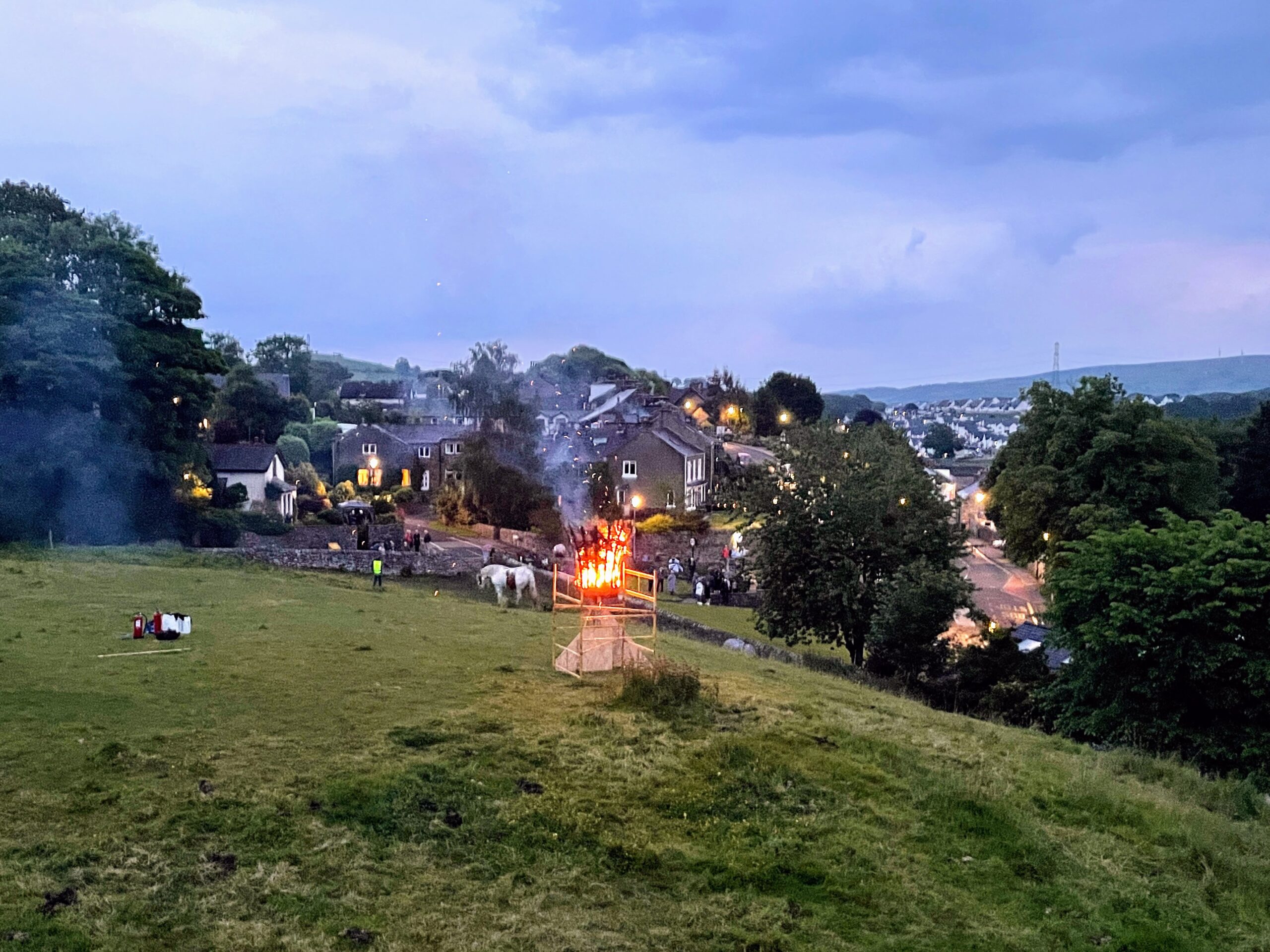
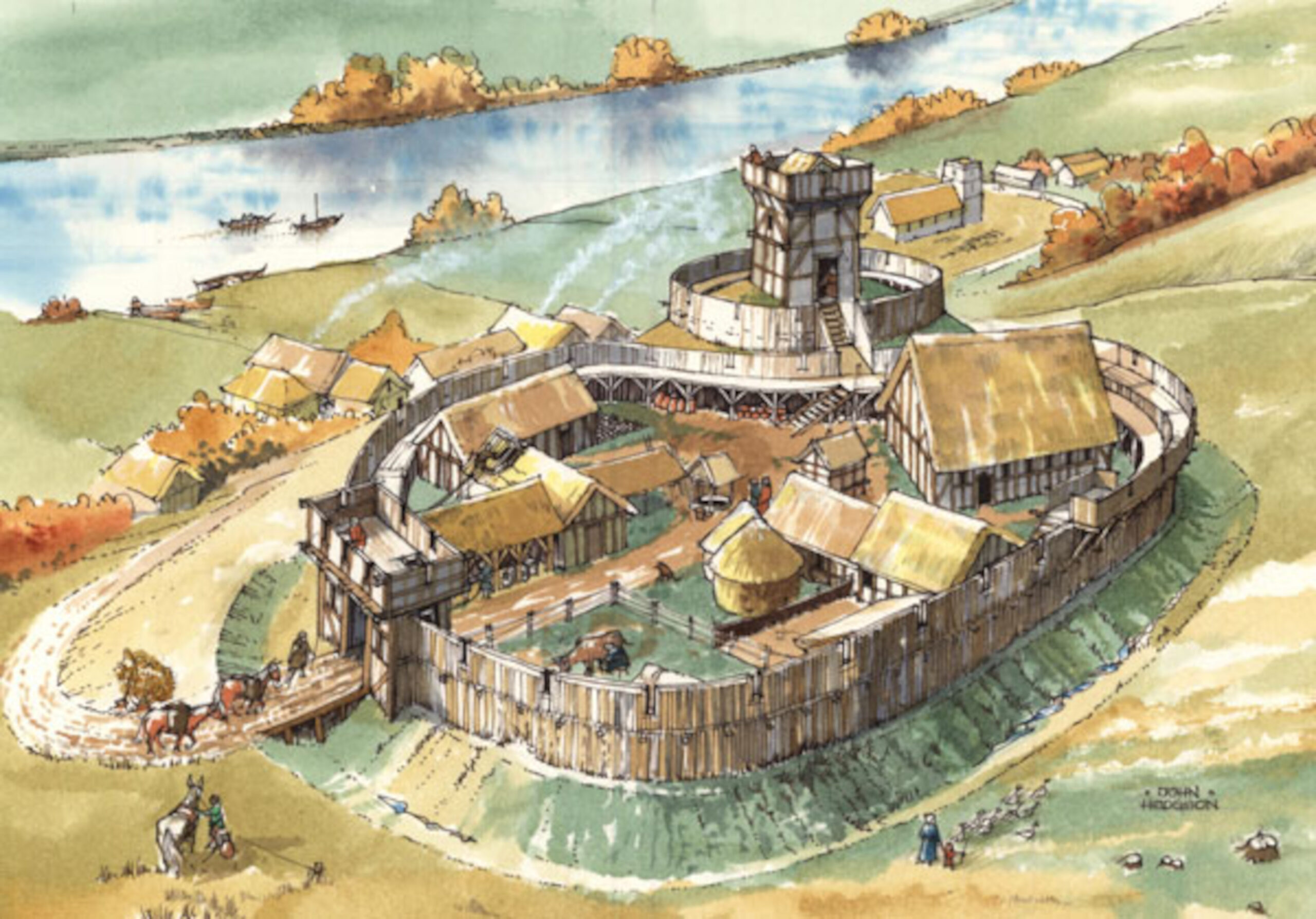
Who is the Parish Council?
Councillors
The Parish Council can have up to 8 councillors.
Councillors represent their local area and everyone who lives there. To become a councillor a person must be over 21 years of age and fulfil a number of requirements. Having taken office, a councillor signs a Declaration of Acceptance of Office and abides by the council’s adopted Code of Conduct.
They must complete and keep up dated a Register of Interests and declare any interests in matters brought before the Council prior to debate.
Councillors have a responsibility to attend meetings and should advise the Clerk of the reason if unable to for approval by the council. At meetings Councillors should suggest ideas, engage in constructive debate and then vote on business.
Councillors may be appointed to a position of office but they cannot be paid. They may represent the Council in legal proceedings, if appointed, carry out regulatory duties and represent the Council on outside organisations.Councillors represent their local area and everyone who lives there.
To be eligible to become a parish councillor a person must:
1. be at least 18 years old
2. be a British citizen, an eligible Commonwealth citizen or a citizen of any other member state of the European Union
3. meet at least one of the following four qualifications:
a) Your name must appear on the register of local government electors for the parish and throughout your term of office should you be elected.
b) You have occupied any land or other premises as owner or tenant in the parish during the whole of the last 12 months
c) Your main or only place of work during the the last 12 months
d) You have lived in the parish area or within three miles of it during the whole of the last 12 months
Having taken office, a councillor signs a Declaration of Acceptance of Office and abides by the council’s adopted Code of Conduct.
They must complete and keep up dated a Register of Interests and declare any interests in matters brought before the Council prior to debate.
The current councillors are:
Carol Slinger (Chair)
Naomi Turner (Vice-Chair)
Anne Lamb
Claire Buntin
Chris Coates
Jonathan Sewell
Darren Rigby
Plus one vacancy – get in touch with the Clerk if you are interested.
Parish Clerk
Every Parish Council has a Clerk, often referred to as the Parish Clerk. The common understanding is that the Clerk organises meetings, takes minutes and send letters. Over the years as the role and responsibilities of Parish Councils have changed, so has the role and responsibilities of the Clerk.
The Clerk’s overall responsibility is to carry out the policy decisions of the Council. They have overall responsibility for the administration and procedural aspects of the Council. The Clerk is responsible for seeing the business of the Council runs smoothly and efficiently and is conducted in accordance with the law. Normally, they are also responsible for ensuring the Council’s financial transactions are properly authorised and recorded. Most Clerks, as sole Council employees, also have to perform the clerical tasks without which the Council’s business cannot properly be carried out.
The current Parish Clerk is: Luke Mills
District Councillors
The local City Councillors are:
James Sommerville: jsommerville@lancaster.gov.uk
Sarah McGowan: smcgowan@lancaster.gov.uk
Sarah will be holding Residents’ Surgeries in Halton Social Club or Over Kellet
Eagle’s Head, on the following dates, between 7pm – 8pm:
July 2nd Over Kellet
September 3rd Halton
October 1st Over Kellet
November 12th Halton
December 3rd Over Kellet
Come along and discuss in confidence any problems you’re having with Lancaster City Council services and I’ll do what I can to help. I look forward to meeting you.
Who do I contact?
Here is a list of contacts if you wish to ask a question or report an issue in your local area.
Police
Dial 999 when it’s an emergency.
For instance, a crime is in progress, someone suspected of a crime is nearby, when there is danger to life, or when violence is being used or threatened
Dial 101 or use the online reporting form.when you don’t need an emergency response.
This could be to report a crime or to seek advice, for example your car has been stolen, your property has been damaged or you suspect drug use or dealing in your area.
United Utilities
Call 0345 6723 723 if flooding is occuring from sewers or burst water mains.
Environment Agency
Call the Floodline (0345 988 1188) for flooding relating to the River Lune
Lancashire County Council
The County Council is responsible for the local highways including road drains. You can report most issues relating to highways via their online reporting tool below. The County Council is the Lead Local Flood Authority. As such they are responsible for reducing the risk of flooding from surface water, groundwater and ordinary watercourses. They can be contacted on 0300 123 6780.
Lancashire County Council – Report ItMeetings – Minutes & Agendas
Meetings are held at 7:15pm at the Centre on the 2nd Wednesday of each month apart from August. There is always an opportunity for members of the public to speak with the council.
Formal Documents
The documents below include Annual Governance and Accountability Returns, regulations, procedures, etc.
Governance
Annual Audits
Prattle
The latest and previous editions of the Prattle can be found below:
